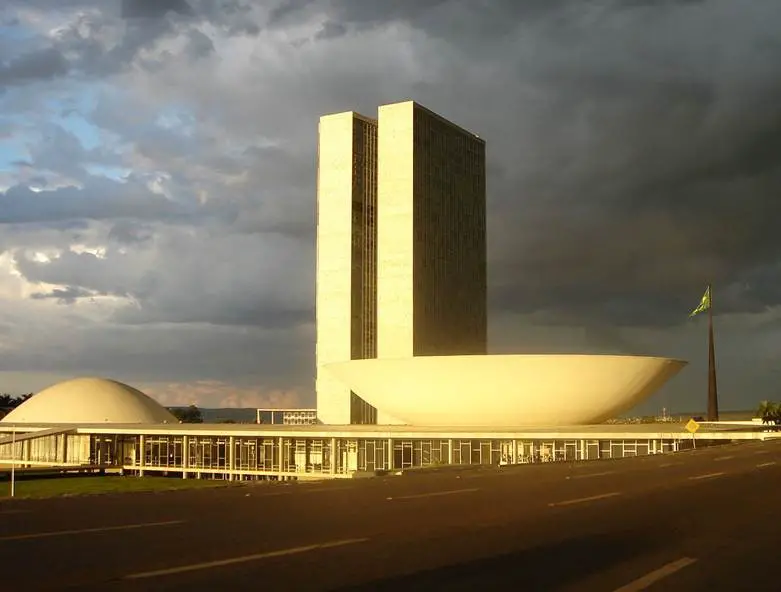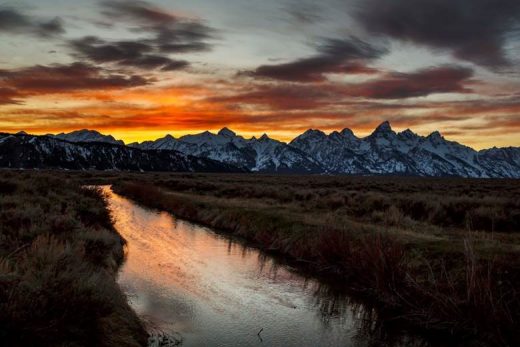United States Architecture, Brasilia Buildings, New Cities and Communities in the USA
Joel Solkoff’s Column Volume II, No. 5
Architectural Column by Joel Solkoff, PA, USA
Joel’s Column Vol. II, Number 5
Building cities in the United States—special Wyoming focus. Plus…
- Profile of the President of the Wyoming American Institute of Architects
- Building a new town in Brasilia and winning the Pritzker Prize for Architecture
- Mayor Elizabeth Goreham, State College, Pennsylvania and Jon Eich head of the regional Planning Commission on preparing accessible, inter-generation housing as part of a community. Their focus is on the next 10 years and thus helping to reverse the decline of small towns in the U.S.
- Consideration of new cities and communities built recently and being built today
____________________________________________________________________________________________________
“The mark and measure of [Lewis] Mumford’s architectural criticism is its emphasis upon the whole human complex into which the building is set. A building for him, is not a free-standing, self-contained structure to be appraised on its aesthetic merits alone. It is but one element in a larger civic or landscape design. Inspired architecture, then, demands inspired… planning.”
–The Lewis Mumford Reader edited by Donald L. Miller
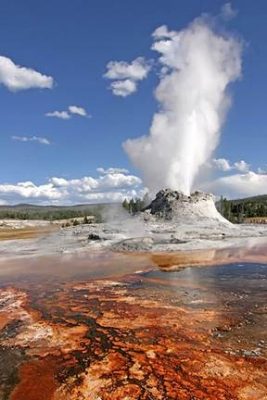
This photograph, provided by Wikipedia Commons, shows Wyoming. The view is of Yellowstone National Park one of several astonishingly beautiful Wyoming places.
++++
The inspiration for today’s column was Buckminster Fuller’s observation:
The economy of Germany and Japan flourished BECAUSE they had the virtue of being bombed extensively during World War II. As a result the Germans and Japanese were able to build new high-tech steel plants. Meanwhile, the dying steel industry in the U.S. constantly renovated existing inefficient plants.
[Joel’s note: I live in the heart of what used to be the U.S. steel industry, an industry once regarded as essential, now characterized by massive unemployment and rotting buildings in rotting towns filing for bankruptcy protection. I plan to discuss: The importance of saving small towns.]
++++
Given the extent of the housing crisis in the U.S. where fewer than 6 percent of housing is wheel chair accessible and where construction companies continue to build residences with steps…
Given that 76 million U.S. baby boomers are beginning to retire at the rate of 10,000 a day…
Given issues ranging from how does our society pay for care of the elderly to how to make productive use of Baby Boomers retiring with multiple degrees and skills AND the need to make additional income…
The idea of building a city in Wyoming came to mind.
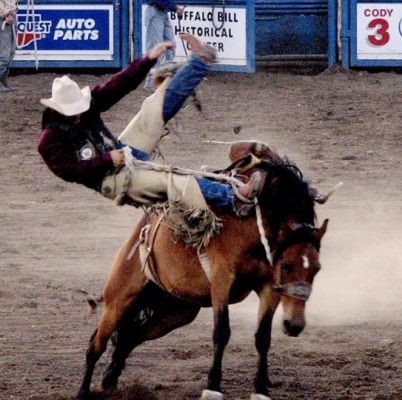
Wikipedia (Wikipedia Commons provided the above photograph) helps with its definition of bronco-riding [but no explanation—no explanation in the world–would have me ride a buckin bronc (nor a bull either)]:
“Bronco or bronc is a term used in the United States, northern Mexico and Canada to refer to an untrained horse or one that habitually bucks. It may refer to a feral horse that has lived in the wild its entire life, but is also used to refer to domestic horses not yet fully trained to saddle, and hence prone to unpredictable behavior, particularly bucking. The term also refers to bucking horses used in rodeo ‘rough stock’ events, such as bareback bronc riding and saddle bronc riding. The silhouette of a cowboy on a bucking bronco [victorious and not like the cowboy above] is the official symbol for the State of Wyoming.”
It also does not help the horse’s disposition that a high volt cattle prod is applied to the horse’s rear end just before the gate opens.
From July 18th through the 27th the largest rodeo in the world, Cheyenne Frontier Days, will be held in the largest city in Wyoming). Cheyenne, also the state capital, has a population of 59,466.
New York City has a population of 8,405,837.
1. Why Wyoming? No people; lots of land (what Westerners refer to as “wide open spaces.”)
Consider:
- Most land in the United States has no people. There are 3,797,742 square miles in the U.S. Population density is 87 people per square mile. Most U.S. residents do not have wide open spaces or any spaces at all.
- There are a lot of people in the United States.
- They live in clusters at big cities and suburbs–places like greater New York, Chicago, and Los Angeles. Use the link and follow relevant prompts from the U.S. Department of Census site: http://www.census.gov/. [Hint: In the U.S. architects habitually study the Census reports.]
- There are 316,129,839 people in the United States.
- The state of Wyoming has a population of 582,658.
- Wyoming is the 50th smallest state in population.
- The population density of Wyoming is lowest among all the states except Alaska. [Most of Alaska is under snow and ice year-round.]
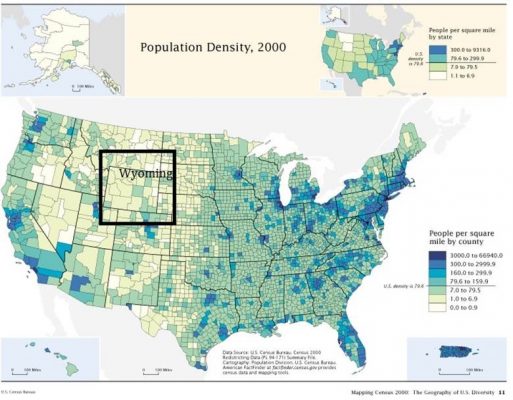
Map of population density (number of residence for each U.S. square mile), courtesy U.S. Census Bureau and my drawing the Wyoming box. Note Wyoming’s remote location within the 48 continental United States
2. A diversion to the Wyoming’s state capital building
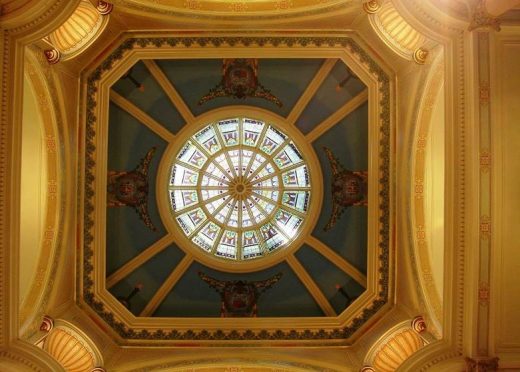
Dome ceiling of the State Capitol of Wyoming. Photo courtesy of Wikipedia Commons
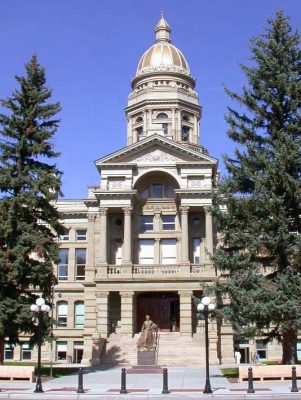
Exterior of Wyoming State Capital Building built with Sandstone from Wyoming quarries. Photo courtesy of Wikipedia Commons
The Wyoming capital was built between 1869 and 1890 as a result of the transcontinental railroad.
In the aftermath of the U.S. Civil War (1861-1865) the railroad dramatically shifted the demographic balance of the U.S. This is a forerunner of the dramatic demographic shift taking place as the Baby Boomers, the largest generation in U.S. history, retire.
In the late 19th century, the railroad’s most notable transformation was the fact that it linked California and New York. When the refrigerated railroad car was developed that link became especially significant as California’s lavish agricultural valleys shipped food to New York City. From a wider perspective, the link eventually made possible the current reality: California now has the largest population in the U.S.
As the railroad transformed the country linking “sea to shining sea,” communities along the way benefitted when a highly-prized train station appeared. In 1869, the arrival of a Union Pacific Terminal overnight transformed Cheyenne into a city.
In 1869, when Wyoming was not yet a state
- The governor declared that Cheyenne was the seat of territorial government.
- A committee was formed to commission a capital building.
- The commission went to the lowest bidder.
[Note: By 1990 the ceiling tarnished and the state legislature decided to guild the dome with 24 carat gold. The gold dome, visible nearly everywhere in Cheyenne, became a popularly recognized characteristic. Originally, the frugal architects building the capital never imagined the use of gold rather than copper. ]
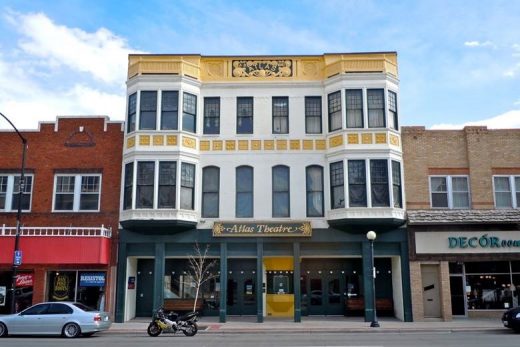
Photo courtesy Wikipedia Commons of a restored building by the 19th Century architect William DuBois.
3. Why Wyoming? The rest of the argument for today’s column
Demographics for the elderly and disabled begin with problems requiring solution:
- Most Americans live in the automobile-reliant suburbs at a time when an aging population becomes increasing unable and unwilling to drive. The suburbs have to go. [Where they should go is a question for another time.]
- Most U.S. cities are too expensive for lower-and middle-class retirees to obtain adequate independent living space, health care facilities, etc. For example, last year when I went to New York City for cancer surgery, I asked the names of inexpensive hotels where I might stay. The list began with a hotel that charges over $600 a night. Obtaining a $200 a night room in Manhattan is a bargain.
- Housing for the disabled and elderly should [I rarely use the word should] provide:
Intergenerational living. The following is a photograph of my neighbor Lilian Hutchinson at Addison Court, an 8-story independent living facility in Downtown State College, Pennsylvania.
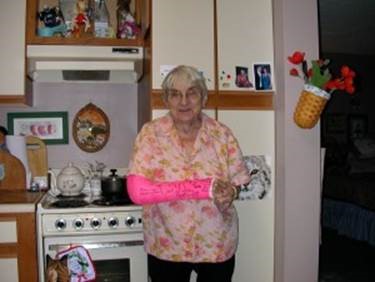
Photo of my neighbor Lilian Hutchinson by Joel Solkoff
Lilian Hutchinson, her elbow healed, is one of the most energetic of our nearly 200 residents. She thrives by being in Downtown and being able to see children, young adults, and to engage (including having a tattoo reading “90” on the occasion of her birthday).
Half a block away from the old age home in which Lilian and I reside is Webster’s Bookstore and Café run by its multi-tasking proprietor (involved in local theatrical circles) Elaine Meder-Wilgus.
At Webster’s there are children drinking organic smoothies and showing to the world they are young.
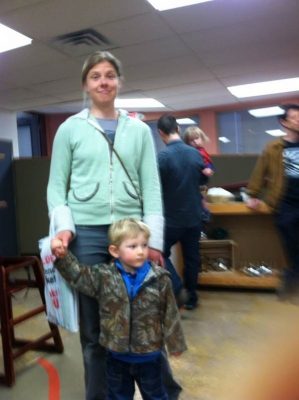
Mother and child at Webster’s Bookstore Café State College Pennsylvania. Photo by Joel Solkoff.
At 66 you have no idea what it means to me to be among children. I see infants and in my mind’s eye I relive those moments of awe when I held my infant daughters Joanna and Amelia in my arms.
I am convinced that access to an institution such as Webster’s where the clientele are multi-generation is essential.
[Joel’s note: In the U.S. of especial significance is a small but emerging community of residents where housing is intergenerational. The ideal is old and young people all in the same building.]
++++
An urgent requirement for the future that is upon us is that the elderly and disabled live in a community where access to goods, culture and services is within easy reach.
Other requirements will be listed in future columns.
[Joel’s note: The building of cities and the promise of Wyoming are obsessions which will continue. Beware.]
++++
As an act of saying of extended Good Bye to Wyoming (for now) you will receive more Wyoming in the form of:
- A photograph showing how astonishingly beautiful is the State of Wyoming
- Abbreviated (soon to be expanded) arguments for building a city in Wyoming.
- Profile of one Wyoming architect with more architects to follow.
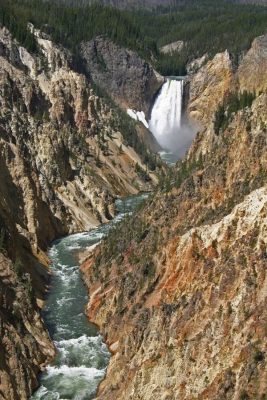
Photo courtesy of the State Board of Tourism. This is Wyoming’s Grand Canyon located in Yellowstone National Park. Wyoming is the first state to have a national park. The state still retains a strong commitment to the environment.
These are arguments for Wyoming:
1 It has plenty of room in which to build a city of nearly three million people.
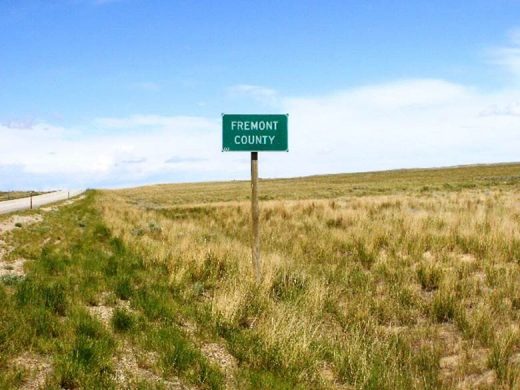
David Phillips grants permission to use his copyrighted photograph taken on entering Freemont County, Wyoming. For Mr. Phillips’ trenchant observations about Wyoming, see: http://www.radbash.com/travel/travelogues/ . Select letter number 11.
Yes there is room to build a city of 3 million in Wyoming (roughly the size of the relatively new capital city of Brazil: Brasilia.
Is building a new city in Wyoming sensible thing to do? I will let you know. Pros and cons.
++++
Meanwhile, here is the work of one Wyoming architect:
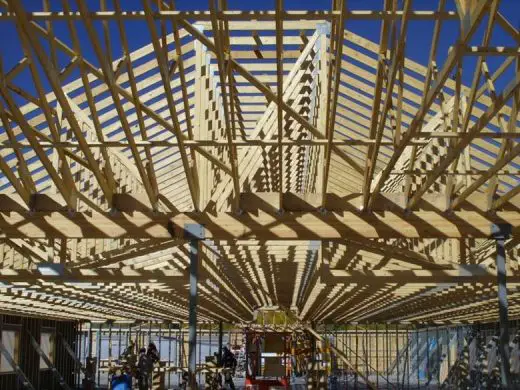
This copyrighted photograph of a barn being built is the work of architect Colleen J. Nelson, Riverton, Wyoming. It is published by permission.
Coleen. Nelson is President of the Wyoming American Institute of Architects. This is her official biography:
“Colleen Nelson, AIA, graduated from Montana State University with a Bachelor of Architecture in 1992 and received her Master’s Degree in 2008. She also studied Architecture at Teknillisen Korkeakoulun University in Oteneimi, Finland and at the Edinburgh School of Art in Edinburgh, Scotland. Ms. Nelson had worked for a large architectural firm for several years before being transferred to Riverton, Wyoming to open up and manage their branch office. She is also a LEED Accredited Professional with 15 years experience in Architecture and managing an office. Ms. Nelson established her own firm, Nelson Architects, LLC in 2010. Over the years she has specialized in school design, commercial buildings and healthcare facilities and has honed her expertise in project management and construction administration.”
Riverton, where Colleen practices her architectural profession, is a town of 10,970. Riverton has an area of 9,896 square miles. Riverton is, as she says, “in the middle of nowhere” namely; in the flat middle of the state. Cheyenne, where Colleen performs her AIA duties as president, is nearly a seven-hour drive away—each way.
Colleen says she works doing “nuts and bolts” architecture—a subject for a future column. Also coming are large project architects in Cheyenne, resort architects near the Great Tetons up north and west, and an interview with an architect who flies one’s own plane from project to project.
++++
To return to Buckminster Fuller’s observation about the virtues of wiping out cities and building again, it is time to build again following the principles of Lewis Mumford, architecture critic for The New Yorker for over 30 years.
Mumford said, “A building should not stand out. It should fit in.” [This quote is the guiding principle of Joel’s Column.]
++++
Building cities
Currently, there are new cities being built in Burma, Nigeria, and Kazakhstan.
There are successful residential communities in the U.S. built on the 19th century concept of “garden cities” around major population centers. They are Reston Virginia; Columbia, Maryland; and Celebration, Florida.
The most famous example of a new city built in my lifetime is Brasilia. In the formal essay explaining why she voted to award the Pritzker Price for Architecture to Oscar Niemeyer, the influential juror and New York Times architectural critic Ada Louise Huxtable expressed concern about Brasilia being “trapped in the errors of early urban theory”
This column will examine the process of building new cities and communities and discuss the problems involved.
Brasilia
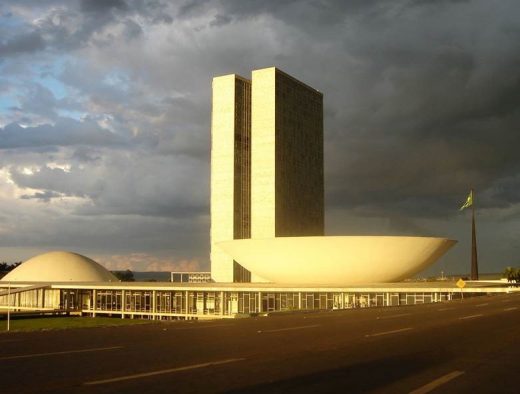
1998 Pritzker Laureate Oscar Niemeyer’s National Congress, Brasilia Brazil, 1960. Photo taken at sunset courtesy of Wikipedia Commons.
In 1957, Lúcio Costa completed work on a design for a new capital city for Brazil. Moving the capital from populous Rio de Janeiro at the southwest to the central part of the country had been a national objective for over 100 years. This objective was written into the constitution.
Costa and his protégé Oscar Niemeyer worked on the plan which won the competition the following year. Construction created a new 3 million person city out of a nearly-uninhabited jungle. Niemeyer designed most public buildings in the new capital.
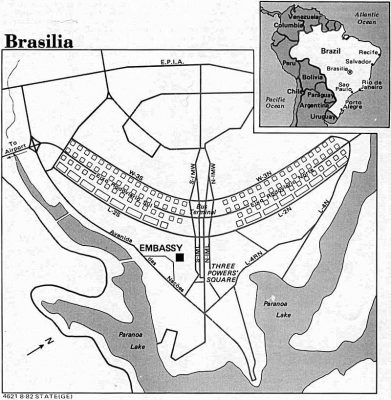
Figure shows Lúcio Costa’s plan for a new city in Brazil. At the top right notice the Brazil map and the location of Brasilia in relation to Rio de Janeiro. Image courtesy Wikipedia Commons.
Brasilia’s success as a city has received both criticism and praise. I do not know enough yet, but I believe cities are better for the elderly and disabled because they offer services not available in suburbs.
As an alternative, I have been pondering, the role of small U.S. towns as a potentially happy solution.
Can the decline of small U.S. towns be reversed in time?
Coming to Joel’s Column, Mayor Elizabeth Goreham, State College, Pennsylvania discusses planning for the next 10 years and thus reversing the decline of her small town.
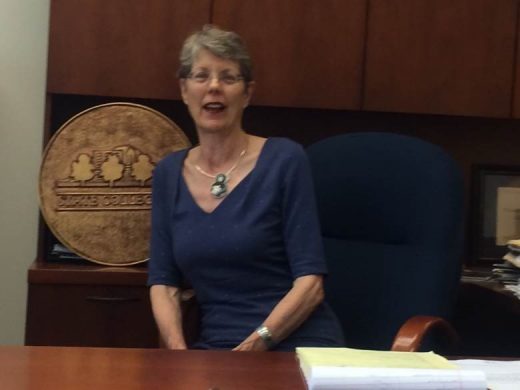
Mayor Elizabeth Goreham for State College, Pennsylvania, a town of 42,034 and a pleasant community in which to live. Photo by Joel Solkoff
Mayor Goreham emails:
“Our meeting last Tuesday has been much on my mind. I understand the urgency of your question – to better understand the dynamics of the change that is already underway, with 10,000 baby boomers retiring each month.
“More universal accommodation and accessibility will be necessary in every facet of life, from housing to restaurants to gas stations and beyond.”
++++
Mayor Goreham arranged for a second meeting with your columnist in which Jon Eich, head of the Planning Commission for Center County made useful suggestions.
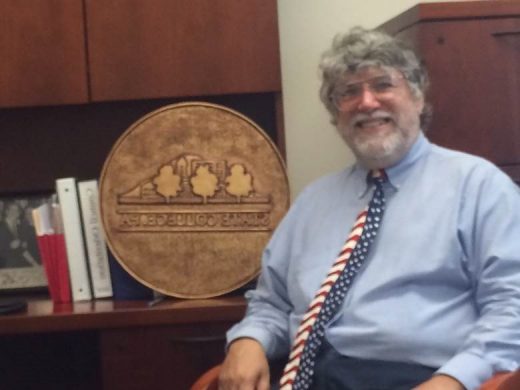
John Eich is Chairman of the influential Planning Commission whose perspective is regional and not confined to the boundaries of the Borough of State College.
Jon Eich emailed:
“an article that is looking 20 years into the future needs to consider ‘the Internet of Things’. Our living quarters routinely will be able to monitor themselves and their occupants for problems and initiate actions to correct those problems. We may do much of our routine shopping without making trips to the grocery. And a significant portion of the energy used by the home may be generated on site (I just saw… solar shingles are being installed in some areas).”
++++
I demur at a 20 year forecast because by then the opportunity of architects, engineers, and the construction industry to avert bad decisions will be over.
Chairman Eich and Mayor Goreham are now united with forecasting 10 years ahead. In my next column, I will report on the obstacles for planning ahead to save small towns highly desirable for the elderly and disabled. Also, I will report on the Chairman Eich and Mayor Goreham objectives to overcome the considerable barriers involved.. The larger issue saving small towns in the U.S.
++++
Future columns will also contain
- Discussion with Deputy Director Brian Regan of Renzo Piano’s Morgan Library and Museum on sending art to Wyoming plus the effect Renzo Piano’s new Whitney Museum of Modern Art will have on the Meat Packing District of Manhattan.
- My daughter Amelia’s quest for a photograph and perhaps even a video of Thom Mayne’s Spanish railroad station under construction near the Portuguese border,
- Influential architecture critics who changed the way the profession views itself: most notably, Patrick Geddes, Lewis Mumford, and Ada Louise Huxtable.
- Review of the wonderful and bizarre movie “The Fountainhead” in which Gary Cooper plays Frank Lloyd Wright twice as intensely as Frank Lloyd Wright played himself.
–Joel Solkoff
Copyright © 2014 by Joel Solkoff. All rights reserved.
I encourage readers to email me regarding suggestions, news, and old fashioned architectural gossip.
[email protected]
*******************
Joel Solkoff – regular guest editor at e-architect
Location: USA
Joel Solkoff’s Columns
Joel Solkoff’s Columns
Joel Solkoff’s Column Vol.II, Number 3
Joel Solkoff’s Column Vol.II, Number 2
Joel Solkoff’s Column Vol.II, Number 1
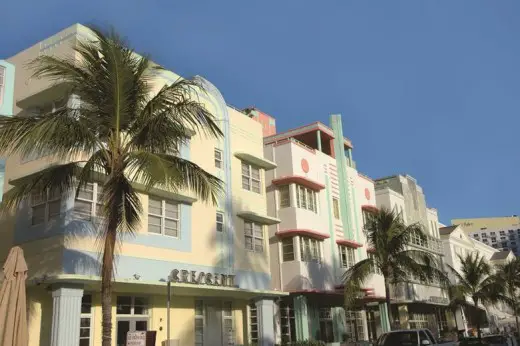
photo : The Crescent a 1938 Art Deco hotel, Henry Hohauser architect, photo courtesy of the City of Miami Beach, Florida
Architecture in USA
Contemporary Architecture in America
J.P. Morgan Library and Museum Building, New York City, USA
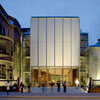
photo by Michel Denancé, provided by permission of the Morgan Library and Museum
J.P. Morgan Library and Museum Building : architecture article by Joel Solkoff. 13 Jul 2013
Comments / photos for the Pérez Art Museum Miami – Joel Solkoff’s Column Vol.II, Number 5 page welcome
Joel Solkoff’s Column Vol.II, Number 5 : page

